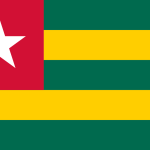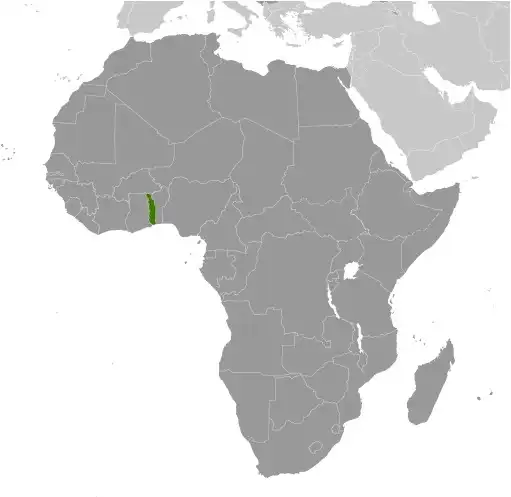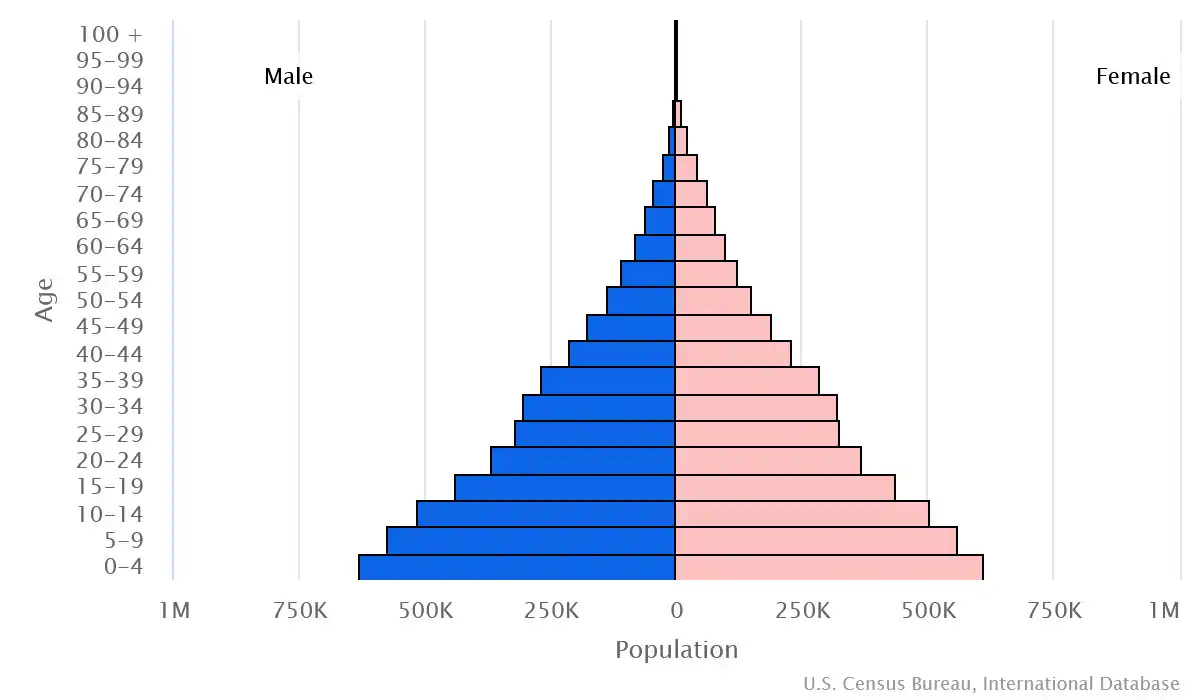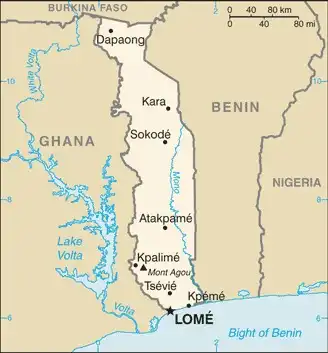
Togo
Country Data Dashboard

| Government type: | presidential republic |
| Capital: | Lome |
| Languages: | French (official, language of commerce), Ewe and Mina (in the south), Kabye (sometimes spelled Kabiye) and Dagomba (in the north) |
People & Society
Ethnicity (2013-14 est.)
Religion (2020 est.)
Age structure

Economy
Economic overview
low-income West African economy; primarily agrarian economy; has a deep-water port; growing international shipping locale; improving privatization and public budgeting transparency; key phosphate mining industry; extremely high rural poverty
Real GDP (purchasing power parity) in Billion $
Real GDP per capita in $
Exports & Imports in billion $
Top 5 Import Partner in 2022 (67%)
Top 5 Import Commodities in 2022
- refined petroleum ⛽
- crude petroleum 🛢️
- motorcycles and cycles 🏍️
- garments 👕
- rice 🍚
Top 5 Export Partner in 2022 (67%)
Top 5 Export Commodities in 2022
- gold 💰
- refined petroleum ⛽
- phosphates ⛏️
- soybeans 🫘
- plastic products ♻️
Geography
Map

Area
Natural resources
- phosphates ⛏️
- limestone 🪨
- marble 🪨
- arable land 🌱
Climate
tropical; hot, humid in south; semiarid in north
Historical Background Information
From the 11th to the 16th centuries, various ethnic groups settled the Togo region. From the 16th to the 18th centuries, the coastal region became a major trading center for enslaved people, and the surrounding region took on the name of "The Slave Coast." In 1884, Germany declared the area a protectorate called Togoland, which included present-day Togo. After World War I, colonial rule over Togo was transferred to France. French Togoland became Togo upon independence in 1960.
Gen. Gnassingbe EYADEMA, installed as military ruler in 1967, ruled Togo with a heavy hand for almost four decades. Despite the facade of multi-party elections instituted in the early 1990s, EYADEMA largely dominated the government. His Rally of the Togolese People (RPT) party has been in power almost continually since 1967, with its successor, the Union for the Republic, maintaining a majority of seats in today's legislature. Upon EYADEMA's death in 2005, the military installed his son, Faure GNASSINGBE, as president and then engineered his formal election two months later. Togo held its first relatively free and fair legislative elections in 2007. Since then, GNASSINGBE has started the country along a gradual path to democratic reform. Togo has held multiple presidential and legislative elections, and in 2019, the country held its first local elections in 32 years.
Despite those positive moves, political reconciliation has moved slowly, and the country experiences periodic outbursts of protests from frustrated citizens, leading to violence between security forces and protesters. Constitutional changes in 2019 to institute a runoff system in presidential elections and to establish term limits have done little to reduce the resentment many Togolese feel after more than 50 years of one-family rule. GNASSINGBE became eligible for his current fourth term and one additional fifth term under the new rules. The next presidential election is set for 2025.
